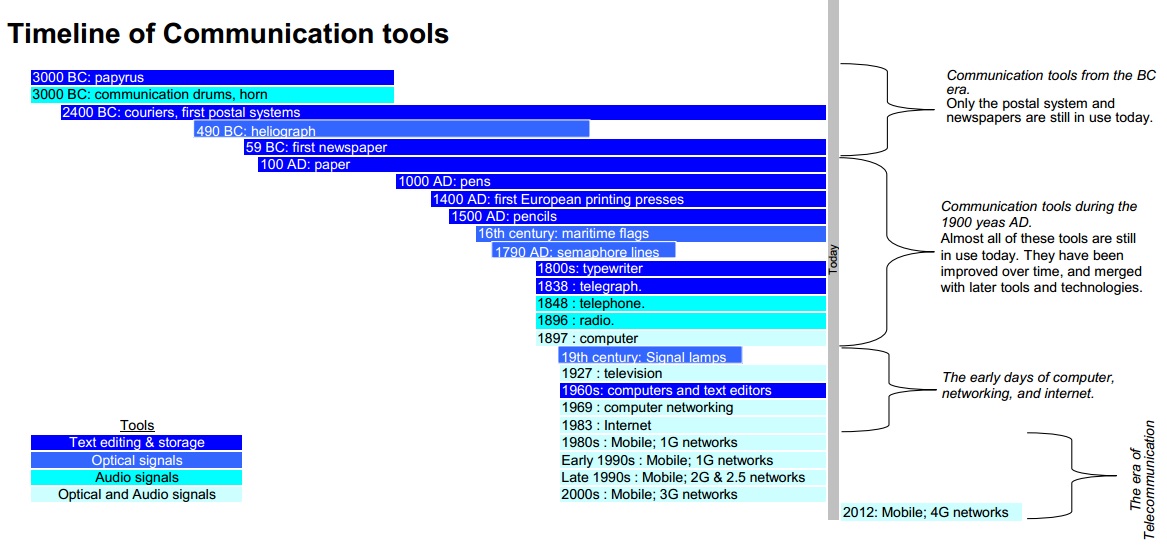Communication is the imparting, conveying, or exchange of thoughts, messages,ideas, knowledge or information through sign and sounds. For example, speech, signals, writing or behavior. There are also communication model, The Shannon-Weaver Mathematical Model, 1949.
What is telecommunication?
Telecommunication is the exchange of information by electronic or electrical devices over a long distance. A complete telecommunication arrangement has transmitter and receiver.

source : Wikipedia
Timeline of Computer Technology
source: http://www.donloadsofts.com/computer-history.htm
The Elements of Computer
There are six elements of computer. It consists of people, procedure, data/information, hardware, software, and communications/connectivity.
- There are two categories of people involved in computer and telecommunication; professional and end user.
- A procedure is a set of tasks to perform some action.
- Data is a representation of facts, concepts, or instructions in a formalized manner for communication, interpretation, or processing by humans or by automated ways. There are a few unit for data. The units are bit, byte, kilobyte, megabyte, gigabyte, and terabyte.
- Next, hardware refers to any physical objects that are part of the computer system. There are five categories of hardware which are input, process, output, storage and communication devices.
- Whereas software is a instructions that controls the functioning of the computer. It consists of a computer program that describe a set of tasks to be carried out by a computer. Software has two types, there are application software and system software. Application software includes database programs, word processors, Web browsers and spreadsheets. System software includes operating systems, computational science software, game engines, industrial automation, and software as a service applications.
- Last but not least is communication. It includes the conversion of data between analog and digital.
No comments:
Post a Comment